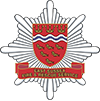
Our doors are open to everyone
Firefighters come in all ages, shapes and sizes.
While you do have to be physically fit, good technique can really help.
Through training, you’ll learn how to tackle physical tasks correctly and above all, safely.
Your natural physical build could be your strength when it comes to certain situations, like being small and agile enough to manoeuvre in tight spaces.
For more on our fitness requirements visit our Fitness Tests page.
There are lots of career opportunities
This is a career, not just a job and you’ll never be stuck doing the same thing day after day.
Not only can you progress with promotion but you can diversify your role and become a specialist within the Service in a wide range of areas ranging from animal rescue through to business safety.
What does a firefighter actually do?
We make communities safer by working in partnership with others and to reduce death, injury, damage to property and the environment from fire and other emergencies.
Firefighters work in three key areas:
Prevention
We expect our firefighters to work hard to reduce the risk to our communities through education and engagement, delivering Home Safety Visits and working with local partners to run safety events and campaigns. We actively involve local communities wherever possible.
Firefighters need to be able to adapt their way of communicating and engaging with the public to effectively share all different types of safety advice including home fire safety, road safety and drowning prevention.
Protection
This is about reducing the risk to our communities by ensuring that premises covered under fire safety legislation (mainly businesses) are operating safely and within the law and our firefighters have a key role to play in this work, frequently referred to as Business Safety. In reality, this can also include the common areas of some blocks of flats as well as businesses.
Another important aspect of our work is promoting fire safety through education and publicity. It is therefore vital that stations forge close links with their local communities and firefighters take part in a wide range of events and activities designed to raise awareness of fire safety.
Response
We respond, along with our emergency service partners, to help people at a range of emergencies to save life, property and protect the environment.
These include fires in properties, cars and open spaces, road traffic collisions, animal rescue, floods and other natural disasters.
Firefighters have to make a quick assessment of the situation. A house fire may require two fire engines, whereas a commercial or factory fire may involve several more engines, as well as requiring thousands of litres of water and foam, plus the use of specialist equipment, such as cutting and lifting gear, protective suits for use at chemical spills and thermal imaging cameras to help locate victims in smoke filled rooms. There is also the hazard of toxic fumes and heavy smoke. With this in mind, Firefighters always go fully protected, with Breathing Apparatus and personal radio sets to maintain contact with colleagues.
